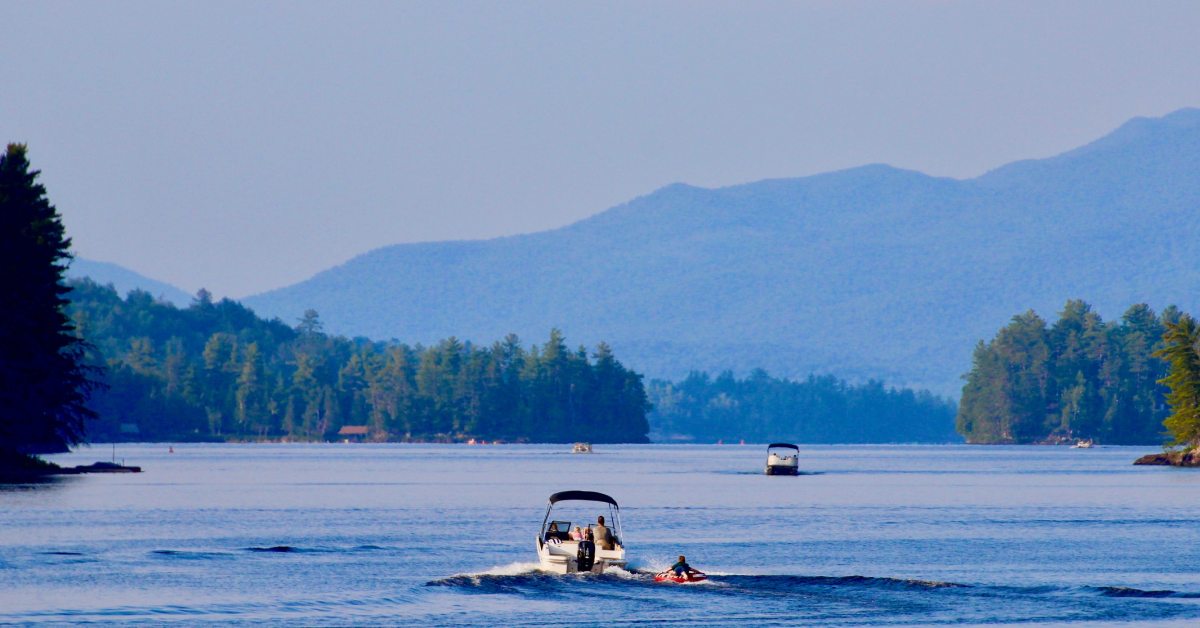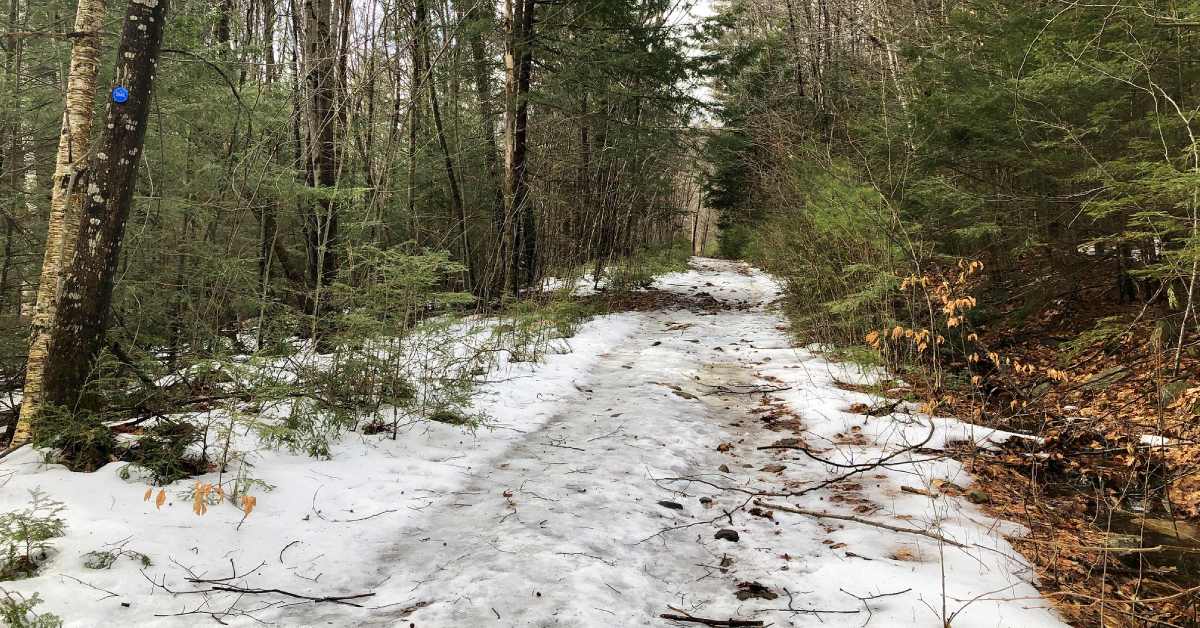Keep in the Loop With the Latest Adirondack News, Local Business Updates, and More
Roundup of What's New in the Adirondacks
Discover what's happening in communities throughout the Adirondack Park! Our Adirondack news roundup features the latest updates about businesses, major event announcements, and a variety of other local stories.
Official Quiet Zone Declared Across Adirondack Park Trails: “Whisper to the Wilderness” Signs to Be Installed

A new initiative aimed at protecting wildlife and enhancing visitor experiences is making waves across the Adirondacks. Starting this spring, a newly proposed Official Quiet Zone will take effect on select trails within Adirondack Park. The announcement comes from the Adirondack Soundscape Preservation Society (ASPS), in collaboration with local and state officials.
Their mission? To ensure that the natural tranquility of the region is preserved for generations to come, with a strict new limit on human noise.
Why the Quiet Zone? The Science Behind the Silence
According to ASPS representatives, the quiet zone proposal is rooted in emerging research showing that excessive noise on hiking trails disrupts sensitive wildlife and affects the overall outdoor experience. From songbirds abandoning nests to moose altering their feeding patterns, noise pollution is increasingly recognized as a threat to the Adirondack wilderness.
The ASPS has recommended a maximum sound limit of 40 decibels—about the volume of a calm conversation in a library—across popular trails and designated wilderness areas.
“When people think of environmental conservation, they often overlook sound,” says Eleanor Briggs, lead ecologist for ASPS. “Reducing human-generated noise helps maintain healthy habitats and also deepens hikers’ connection to the landscape.”
Trailhead Signage & Enforcement: Whisper to the Wilderness

In the coming weeks, visitors will begin to notice new signage at popular trailheads, including Cascade Mountain, Giant Mountain, Sleeping Beauty Mountain, Pharaoh Lake Wilderness, and other high-traffic destinations. Each sign encourages hikers to “Whisper to the Wilderness,” with friendly reminders of the 40-decibel limit.
To gently enforce the rule, ASPS volunteers and forest rangers will be equipped with handheld decibel meters at select trailheads. While no fines will be issued during the pilot phase, hikers may be asked to practice “volume awareness” before continuing on their trek.
“The signs are just the start,” explains Briggs. “We’re also offering free ‘whisper workshops’ every Saturday at Adirondack trail centers to help visitors learn effective ways to lower their vocal footprint.”
In addition, rangers will provide visitors with pocket-sized “soundscape pledge cards” featuring tips like “Keep conversations soft and footsteps light.”
Community & Visitor Reactions
As the Adirondack Park sees record-breaking visitor numbers year after year, concerns about trail overcrowding and its impact on the wilderness experience continue to grow. Some see the ASPS Quiet Zone initiative as a thoughtful way to address this—not just by reducing noise, but by encouraging a more mindful style of recreation.
“I think it’s a smart move,” says Tom Landers, a hiking guide based in Lake Placid. “You reduce noise, and suddenly the trails feel less hectic. Plus, people might slow down, take in more of their surroundings.”
Not everyone is sure how it will work, though. Melissa Cohen, a tourist from Albany visiting with her two young children, admits, “Convincing my kids to whisper for a whole hike might be the real challenge!”
Still, ASPS remains optimistic. “We see this as a cultural shift,” says Briggs. “Before long, it’ll be as routine as leaving no trace or checking the weather forecast.”
What’s Next for ASPS & Adirondack Park?
Following the pilot program, ASPS hopes to expand the Quiet Zone to even more wilderness areas and trails. They’re also exploring initiatives like “whisper-friendly canoe routes” and “silent sunrise hikes” to deepen the connection between visitors and nature.
“We’re always seeking new ways to protect the Adirondacks’ unique soundscape,” Briggs says. “Silence can be just as powerful as the views.”
For now—and likely always—feel free to enjoy the Adirondacks’ peacefulness, no decibel meter needed. Happy April Fools’ Day!
Long Lake to Receive Proceeds from Sale of Historic Whitney Park

The town of Long Lake is set to receive a major financial boost thanks to the anticipated sale of a historic Adirondack property. Whitney Park, a 36,600-acre private tract of land once owned by Saratoga socialite Marylou Whitney, is on the market, and Long Lake has been named the sole beneficiary of the proceeds.
Town officials say the unexpected gift will provide incredible opportunities for the community for generations to come.
Whitney, a well-known figure in the region, originally owned around 50,000 acres in the Adirondacks. In 1997, she sold 15,000 acres to the state, which is now part of the William C. Whitney Wilderness Area. After her passing in 2019, her husband, John Hendrickson, listed the remaining land for sale, initially asking $180 million. While there was interest, the property has yet to sell and is now listed for over $100 million.
Hendrickson's estate will continue oversee the sale, with Long Lake set to benefit once a buyer is found.
Long Lake officials say they will carefully manage the proceeds to ensure they positively impact the community. While it may take years before the funds arrive, town leaders are already considering how best to use them in a way that honors Hendrickson’s legacy and benefits residents.
Source: North Country Public Radio
DEC Warns of Dangerous Winter Conditions in the Adirondacks and Catskills

Heading to the Adirondacks or Catskills? The DEC warns that fluctuating temperatures are rapidly melting snow and ice, creating hazardous conditions, including a risk of avalanches in some areas. Outdoor enthusiasts should stay alert to changing weather and trail conditions.
Rising temperatures will cause streams and rivers to swell, potentially reaching flood levels. Ice jams on major rivers may also lead to localized flooding, impacting roads and communities.
On frozen lakes and ponds, shifting ice may create dangerous ridges and weak spots, posing risks for snowmobiles and other travelers. Those venturing out should use extreme caution, especially when crossing waterways.
DEC Forest Rangers emphasize the importance of using proper traction devices on icy trails. Snowshoes are recommended in deep snow, while crampons or ice axes may be necessary on steeper, exposed terrain.
Additionally, hikers should be prepared for cold, wet conditions by wearing quick-drying layers and carrying emergency essentials, including extra clothing, food, and headlamps. Navigating through snowy terrain requires more energy, so planning ahead and knowing your physical limits is crucial.
To stay safe, visitors should stick to lower-elevation trails, avoid water crossings when possible, and check weather forecasts before heading out. If conditions worsen, turning back is the best option.
For up-to-date trail conditions and winter hiking safety tips, visit the DEC’s official website. In case of an emergency, call 911 or contact a DEC Forest Ranger for assistance.
Find things to do in the Adirondacks >>